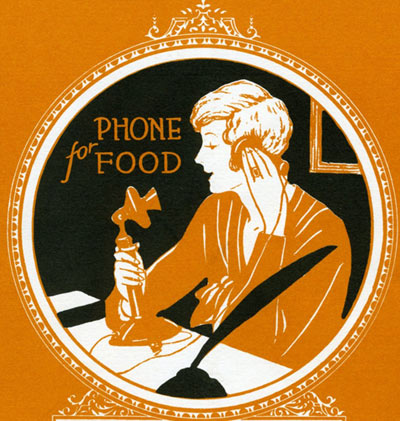Phones in S.B.
When did the first telephones come to Santa Barbara?

In the summer of 1886, the city saw the erection of 27-foot poles, each capable of carrying 100 wires. This was necessary because each telephone had its own wire. The switchboard was placed in A.M. Ruiz’s drugstore at 729 State Street. In July, the Sunset Telephone and Telegraph Company began operation with 50 subscribers.
Using the phone in 1886 was no easy matter. First you had to ring twice to connect with the exchange, then wait for a return ring before picking up the receiver. You then gave the operator the number you were trying to reach, hung up, and gave one ring. You waited until your phone rang again, before picking up the receiver to speak to your party. Upon finishing your call, you rang one more time to break the connection.
Still, telephones were popular. By July 1887, more than 80 subscribers had signed up. During these early years, telephone directories were printed periodically in the newspaper. In November 1893, the directory in the Morning Press included some 200 names.
Santa Barbara’s 1895 directory, printed separately, was all of three pages long. It featured instructions on how to handle a busy signal. In past years, the company would ring callers back when their busy party was disengaged. Now the caller had to keep calling the operator back until the desired party was available. The company pointed out that there would be no extra charge for what appeared to be a cut in service.
By the early 1890s, there were grumblings about high rates, inconvenient party lines, and lack of service to outlying areas. As the century drew to a close, numerous independent telephone companies sprang up nationwide due to the expansion of a number of patents, and Santa Barbara took part in this development. In some circles, the prospect of competing companies was an attractive one; one newspaper extolled the “luxury of two telephone companies in our midst trying to cut each others’ throats.”
In 1902, a new company came on the scene. After installing its own set of poles, the Home Telephone Company began serving customers in 1904, promising to charge only $1.50 a month to residences and $3 to businesses in an attempt to undercut its rival. The company also promised a host of additional services: up-to-the-minute weather forecasts, baseball scores, and announcements of coming theater attractions. Subscribers could arrange for wake-up calls and reminders to take medications. The company extended telephone service up San Marcos Pass and into the Goleta Valley.
There were problems—customers now needed two phones, each with a line. This unwieldy situation lasted for more than 12 years. In 1916, the State Railroad Commission, which regulated the industry, granted approval for a merger between the Home Telephone Company and the Pacific Telephone and Telegraph Company (formerly Sunset) to form the Santa Barbara Telephone Company. The merger was completed in the summer of 1917. In the days immediately after the merger took effect, the company handled a flood of calls. The merger had resulted in numerous telephone number changes that required increased operator assistance. Also, many customers rang in just to assure themselves the system still worked.
During the next few years, there were periodic complaints about rate increases, especially by those who lived in outlying areas, who for a time were charged a 10-cent toll for each call. For good or ill, a new era in telephone communication had begun for Santa Barbara.



